Every year, like clockwork, between Christmas and New Year’s Day, as work is quieter than normal and the financial year-end approaches, I think “I should get a jump of end of year payroll, and file T4 slips right now.”
And every year I hit the brick wall that is Canada Revenue Agency’s “systems maintenance” that prevents e-filing of T4s between December 21 and January 7.
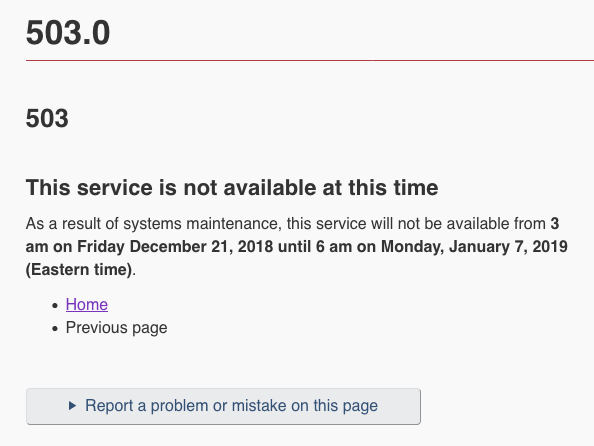
What inevitably happens is that, with my momentum quashed, I set the task aside and then realize, after the February 28 deadline, that I’ve waited too long.
Inspired by Patrick Rhone (who, in turn, was inspired by Derek Sivers), I have created a /now page. As outlined here, this is a that fills a gap that exists amidst blogging, social media et al:
No. If I wonder how someone is doing these days, it doesn’t help me to see that they went on vacation last week, are upset about something in the news, or even got a new job. That’s not the big picture.
Think of what you’d tell a friend you hadn’t seen in a year.
Like, “Still living in Dallas, though considering moving to Austin. Working at ABC. Really getting into cycling. The kids are age 3 and 6. I’m reading a lot of Pema Chödrön, and listening to a lot of jazz piano especially Brad Mehldau. I’ve stopped taking on web design clients, since I’d rather keep improving my back-end database work.”
That’s what a now page is for. You can’t get that big picture from any other outlets I’m aware of.
I was also inspired, covering the same terrain, by Austin Kleon’s post Don’t discard. Keep all your pieces in play., especially:
Margaret Atwood once said, “You’re supposed to do one thing. If you do more than that, people get confused.”
It’s not just that other people get confused – you yourself get confused. You love all these things, but you feel like you’re supposed to pick one.
My answer to “what do you want to do when you grow up?” is “everything.” Which is born out by my coding, writing, printing, bookbinding pursuits.
I’ve long admired the weeknotes of my friend Ton, and the monthnotes of my friend Peter, but I’ve never got it together enough to be that regularly retrospective; I’m hoping I’ll be more successful at this project; I’ve already got a reminder to update the /now on January 28, 2019.
(See also Less, More and None, a similar but different effort; I don’t have it in me to be that declarative right now; via University of Winds).
Catherine generously gave me a copy of Making Books, from the London Centre for Book Arts, for Christmas. Many handmade books are sure to follow.
I love that they have a project called A6 that accepts submissions of self-published “artist books, zines and publications,” with the only constraint being they must be A6-sized.
A6 is my favourite of the ISO paper sizes: I love my A6 notebooks and the pouches I carry them about in; I went as far as equipping myself with an A6-sized water bottle this fall.

Making Books has a very clear diagram of how the ISO paper size system works:
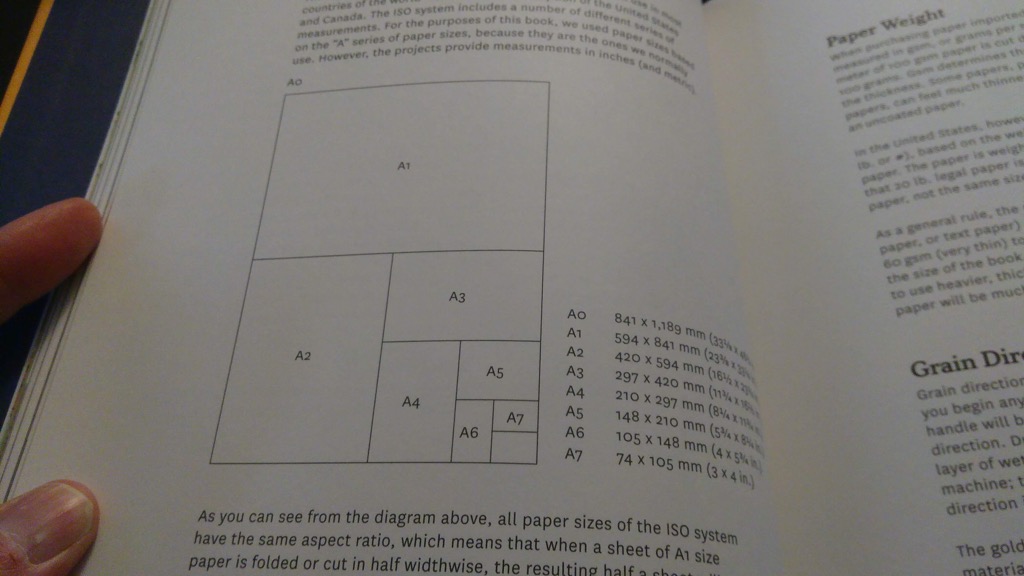
Each size from A0 to A7, when folded in half, becomes the next size down: fold an A6 in half and you get an A7 signature. It’s brilliant, and it’s a shame that, when we converted to the metric system in Canada in the 1970s, we didn’t go all the way and adopt this sizing system as well (the province of Ontario tried, but ultimately gave in; when I was in grade 13 in high school the photocopiers were filled with A4 paper).
I had a nice chat with my friend Stephen and his mother Carol last night on the telephone. Carol was talking about her 6 children, and how 4 of them have “permanent partners,” which was her way of saying they were married.
Catherine and I have long sought a way of describing our unmarried union (we’ll have been dating for 28 years in 2019) and I think permanent partnership is the best term I’ve yet heard.
Sometimes Google Photos comes up with the most interesting things, all on its own. Here’s an animated GIF it made for me yesterday: Catherine is looking through the jars of the “studio snack station” I gave her for Christmas (12 mason jars, each with a different snack), and Oliver’s looking at the book Fika: The Art of The Swedish Coffee Break, with Recipes for Pastries, Breads, and Other Treats that I gave him both to remember a stop in Toronto this spring and to remember a delightful fika in Sweden itself this summer. Meanwhile, Ethan’s just plain excited by everything.
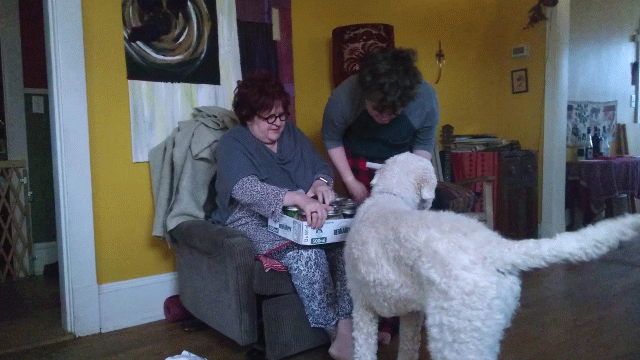
In this post about SimCity for the NES:
The original version of SimCity was written by Will Wright for the Commodore 64 as a follow-up to his first game, 1984’s Raid on Bungeling Bay, a helicopter flight simulator that was published by Brøderbund.
As Wright often tells it, the germ of an idea for SimCity actually evolved out of Bungeling Bay’s map editing tool.
“I found out that I had a lot more fun building the islands than I did flying around in the helicopter,” Wright told GameSpot in a 1999 interview.
Being open to the embrace of unintended fun is a skill we should all cultivate.
In the same vein, I became an unlikely fan of waterslides when visiting public pools in Iceland: I went for the “lolling about in hot water” and found that “careening into hot water” was way, way more interesting.
From yesterday’s Citizens’ Alliance News, a helpful guide to sorting waste streams at Christmas.
By volume our Christmas morning wrapping was about 65% compostable, 30% waste and 5% reusable. We can do better next year.
You can subscribe to Citizens’ Alliance News yourself: every morning you’ll get a mix of coming events, practical advice and progressive opinion in your inbox, well-curated by Chris Ortenburger.
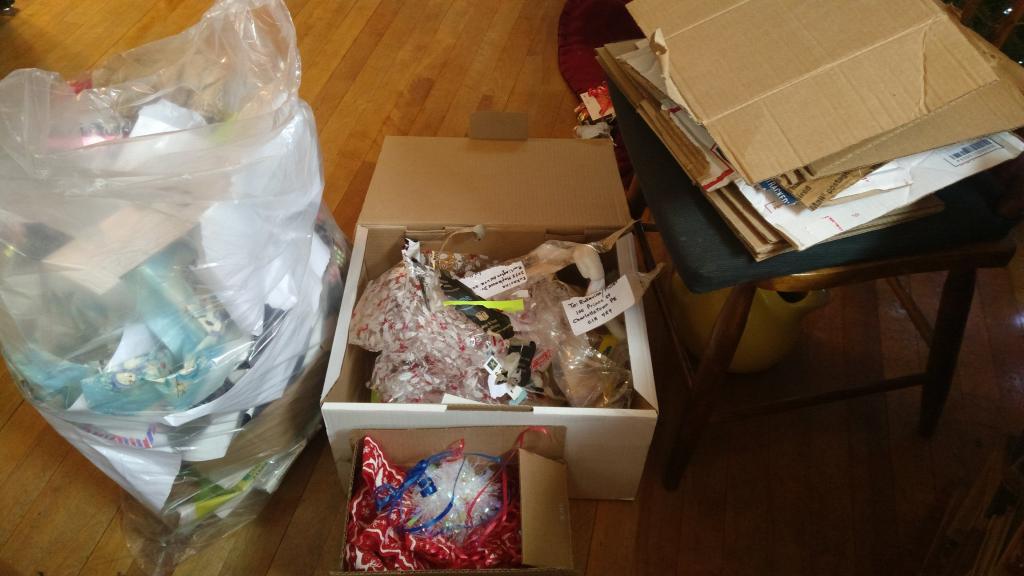
I spent Sunday working out the details of this epic Node-RED flow, designed to turn my dumb (but effective) Venta Airwasher humidifier into a smart (and even more effective) humidifier.
The basics of this involve getting the office humidity reading from a DHT22 connected to a Raspberry Pi, figuring out if it’s an office day or not, and then deciding whether or not to turn the humidifier on or off (via a Wemo Mini WiFi Smart Plug).
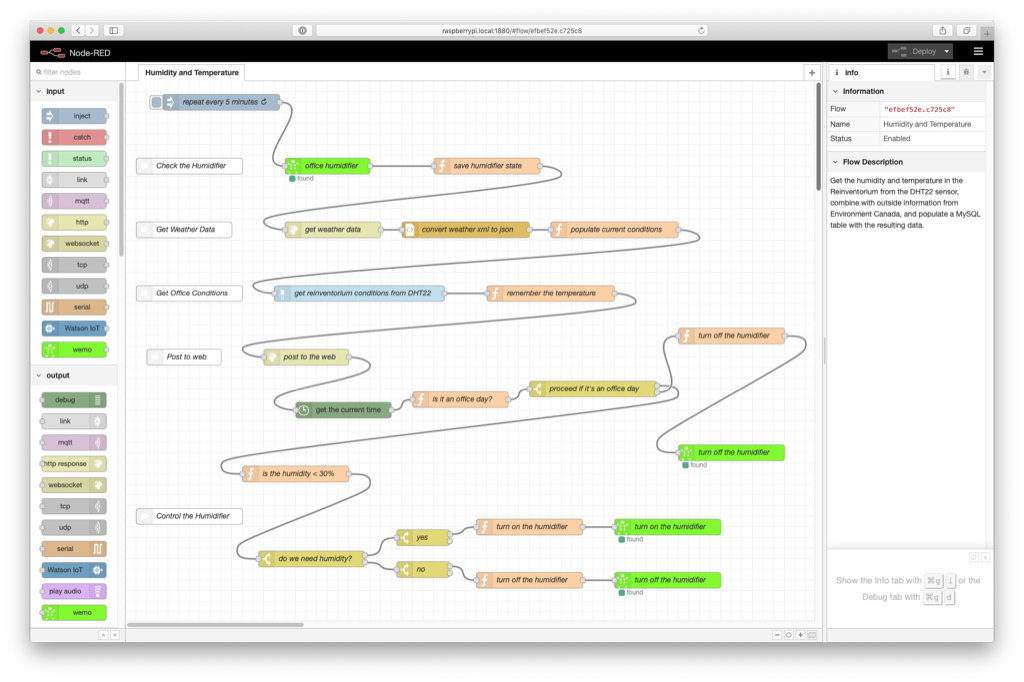
You’ll note that I also grab Charlottetown weather information as part of the flow (freely available from Environment Canada as XML); because I log both the inside and outside temperature and humidity to a database, in addition to controlling the humidifier, the flow also gives me what I need to drive a PiTFT mounted on the same Raspberry Pi to display status information for both the inside and the outside (building upon the work helpfully documented here).
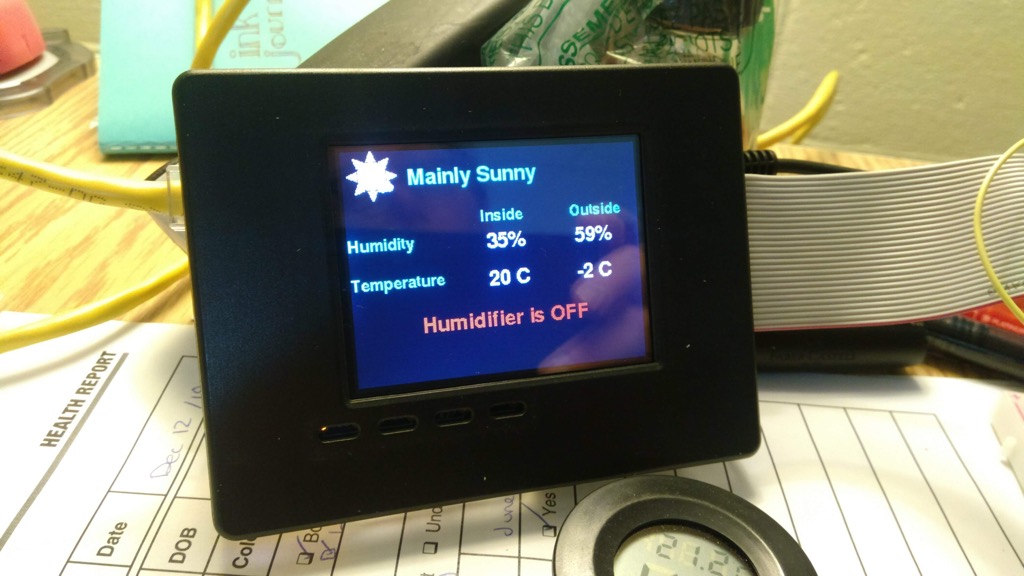
It was nice to have the prior art of previous year tinkering to build upon for this.
Ton kindly sent me some photos from our visit to their house in Amersfoort this summer, and this one is my favourite. If memory serves, we were listening to Frank talk about the IndieWeb (Oliver was watching the screen, I was watching Frank).
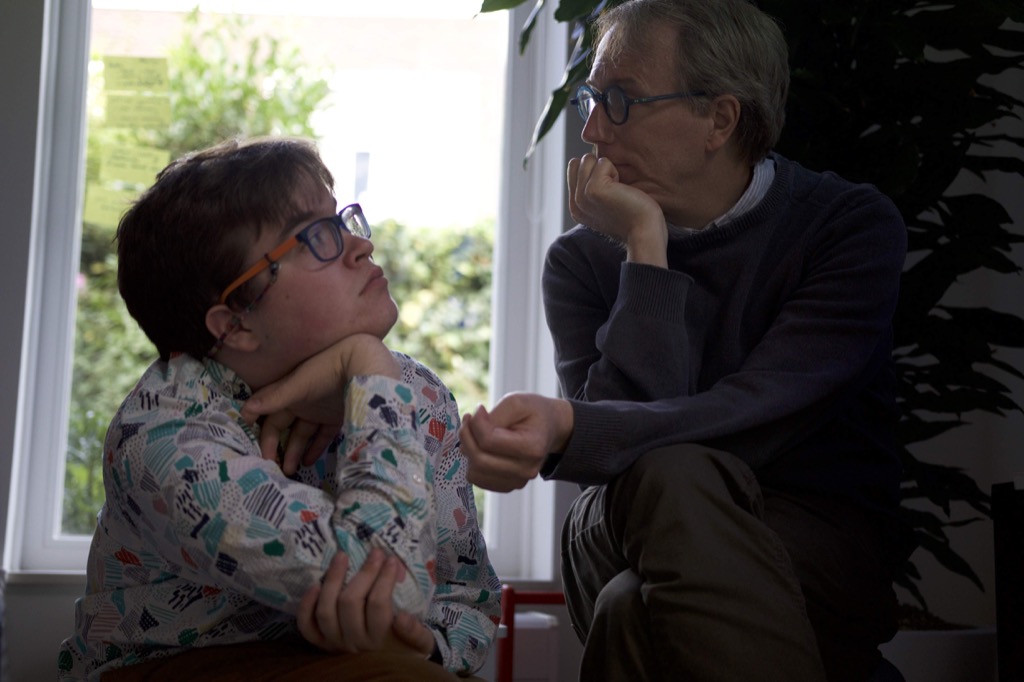
By far and away my favourite YouTube find of the year was All the Stations, a project of the entertainingly nerdy and passionate couple Vicki Pipe and Geoff Marshall wherein they undertake to visit every single railway station in Britain.
Perhaps the best introduction to the ethos of the project comes deep into Scotland in the video Chose Corrour, which serves as a sort of manifesto of acceptance of being interesting in interesting things. It’s okay to be a nerd.
While Geoff and Vicki completed their quest in 2017, they continue to release railway-related videos on their YouTube channel, including this week’s lovely The Shortest Train, a sequel to this summer’s The Longest Train.
Rather than traveling down the spine of Britain as they did for the summer solstice, for this winter solstice they took the 2 minute journey from Wrexham General to Wrexham Central, and did it with humour and panache.
If you fall into the All the Stations wormhole, you may not emerge for several weeks, as visiting 2,563 stations takes time. But I promise you will be delighted.
Some years ago Catherine and Oliver and I visited the Spring Geequinox while on a trip to Halifax. The event was a sort of “Comicon for people too weird for Comicon” and I was initially very, very uncomfortable with the heady mixture of Renaissance reenactors, ham radio operators, board game aficionados and furries.
But then I had a revelation: the freedom of each of those in the hall to be geeky in their own way opened up space in the universe for me to be geeky in my own way.
Printing presses and typewriters and fountain pens and bookbinding are my jam, not Dungeons & Dragons or inhabiting the soul of Shrek, but all are things that run contrary to the conventional, and the prominence and celebration of one only seeks to enliven all the others. My revelation put me immediately at ease, and that ease has taken me to places I wouldn’t have been able to get otherwise.
Visiting every railway station in Britain is, by almost any measure of reasonable, an inane thing to do. Which is why it’s such an interesting thing to do, especially when it’s done full-throated and without apology as Vicki and Geoff did it.
Bravo.
 I am
I am